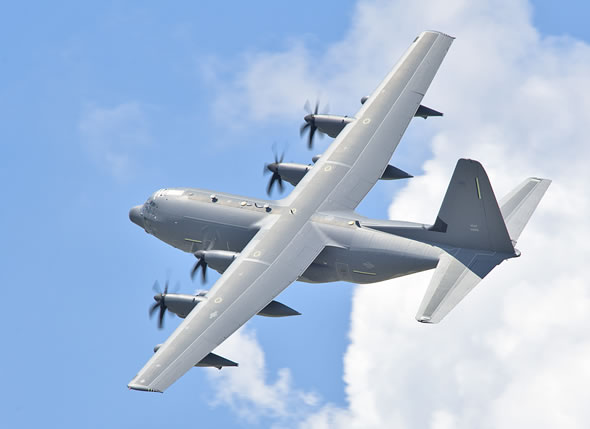
Lockheed Martin delivered the first of 11 HC-130J Combat King II personnel recovery aircraft to the United States Air Force’s Air Combat Command (ACC). Combat King II is the successor of the HC-130P (Combat King I) based on the modern C-130J tanker configuration has the Enhanced Service Life Wing, Enhanced Cargo Handling System, a Universal Aerial Refueling Receptacle Slipway Installation for boom refueling. Self protection systems include radar and missile warning receivers, chaff and flare dispensers. It is equipped with an electro-optical/infrared sensor for night piloting. A combat systems operator station is also added on the flight deck. The aircraft also has dual Satcom links supporting low-probability of detection data-burst communications. The 71st and 79th Rescue Squadrons in Air Combat Command, the 550th Special Operations Squadron in Air Education and Training Command, the 920th Rescue Group in Air Force Reserve Command and the 106th Rescue Wing, 129th RQW and 176th Wing in the Air National Guard will operate the new aircraft.

The HC-130J is a result of the HC/MC-130 recapitalization program, replacing the Air Combat Command’s aging HC-130P/N fleet as the dedicated fixed-wing personnel recovery platform in the Air Force inventory. The HC-130P/N are operated by the Air Combat Command since 2006.
The HC-130J can fly in the day; however, crews normally fly night at low to medium altitude levels in contested or sensitive environments, both over land or overwater. Its mission is to rapidly deploy to execute combatant commander directed recovery operations to austere airfields and denied territory for expeditionary, all weather personnel recovery operations to include airdrop, airland, helicopter air-to-air refueling, and forward area ground refueling missions.
Crews use NVGs and the new stabilized EO payload for tactical flight profiles, avoiding detection to accomplish covert infiltration/exfiltration and transload operations. To enhance the probability of mission success and survivability near populated areas, crews employ tactics that include incorporating no external lighting or communications, and avoiding radar and weapons detection.
Drop zone objectives are done via personnel drops and equipment drops. Rescue bundles include illumination flares, marker smokes and rescue kits. Helicopter air-to-air refueling can be conducted at night, with blacked out communication with up to two simultaneous helicopters. Additionally, forward area refueling point operations can be executed to support a variety of joint and coalition partner.
















